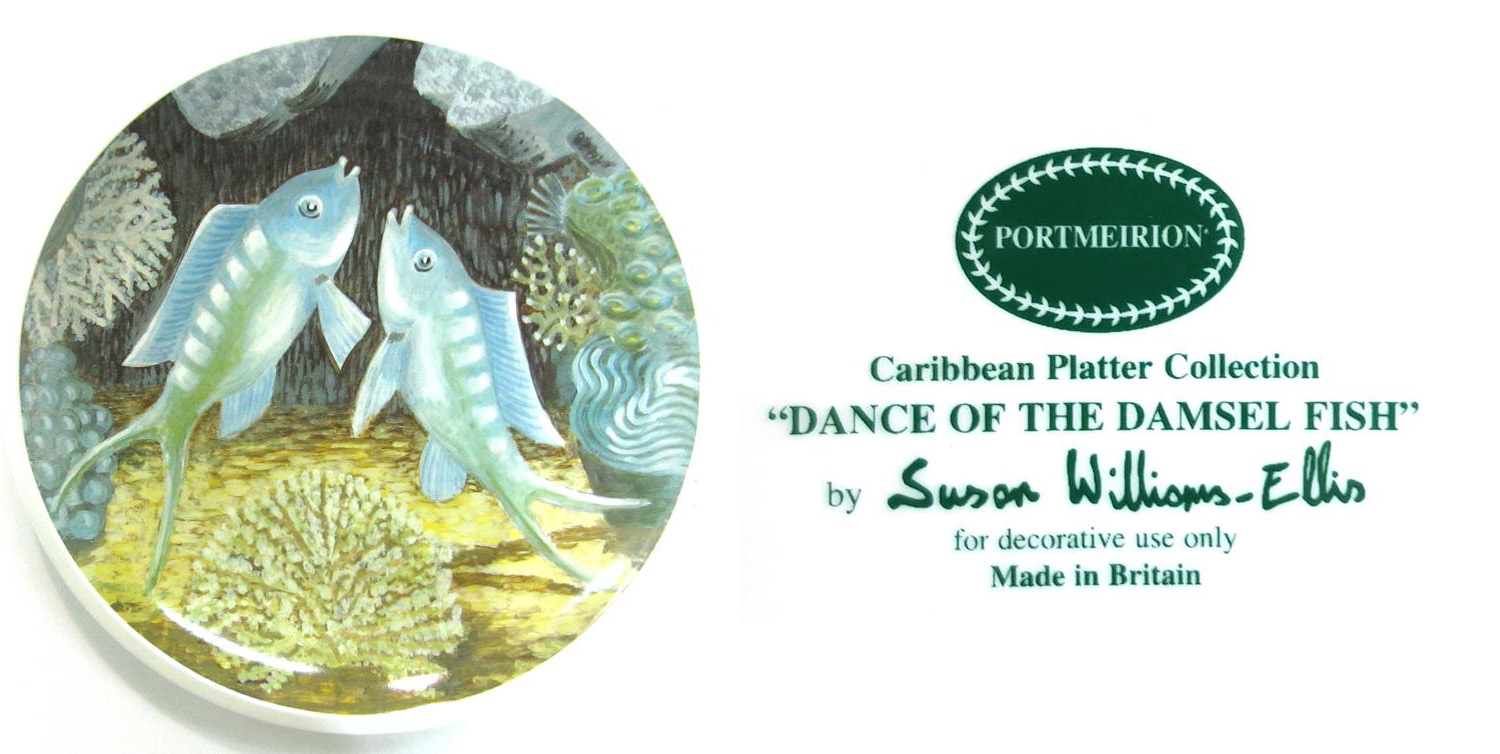Designs for Portmeirion Pottery (various media, often painted with watercolour or gouache, but also numerous sketches and drawings, often annotated) notebooks, correspondence, photocopies, lithographs, catalogues and brochures. The collection also contains a vast quantity of Portmeirion pottery objects, some of which are displayed at Brondanw and in Portmeirion Village.
It is a widely held belief that Portmeirion Pottery was made at Portmeirion. This is not the case, it was (and still is) made at Stoke-on Trent, but the idea of it was conceived in Portmeirion Village.
In 1953, Susan Williams-Ellis and her husband Euan Cooper-Willis took over the shops in Portmeirion Village. Susan sent a number of her designs to Gray’s Pottery in Stoke-on-Trent, where they were used to decorate blank pottery items which were then supplied to the Village to be sold as souvenirs in Portmeirion’s Ship Shop.
In 1960, Susan Williams-Ellis and Euan purchased Gray’s factory, and, soon afterwards, the neighbouring factory, Kirkham’s. Portmeirion Potteries Limited was incorporated in 1962, and a series of successful pottery ranges were launched, most notably the iconic cylinder-shaped coffee pot decorated with popular designs such as ‘Totem’.
In 1972, ‘Botanic Garden’ was launched; fifty years on it is still Portmeirion Pottery’s most popular range. Following its success, Susan had big ideas for a factory near Portmeirion Village, which opened in 1978. However, the logistics were challenging and manufacturing pottery was not possible, though seconds from Stoke were hand painted, or decorated with transfers for local distribution and sale. All items decorated here bear the pink dragon backstamp with the words ‘Porthmeirion Cynnyrch Cymru’. The factory was not commercially successful, and closed in 1982.
Susan liked to make use of what she had, and in the 1980s the ‘British Heritage Range’ was launched, created from moulds formerly belonging to Kirkhams, which she found in an attic.
In 1988 Portmeirion Potteries Ltd. became the Portmeirion Group PLC, and ceased to be a family firm, i.e., was no longer controlled by Susan, although she continued to design pottery for the rest of the century.
1994 saw the invention of Portmeirion China, a breakthrough in ceramic manufacture. Susan’s last two most notable ranges, in the late 1990s, were ‘Romance of the Rose’, and ‘Caribbean Platter’, the latter being a reflection of her passion for snorkelling in tropical waters and drawing the fish that she encountered.
All the ceramics illustrated here were designed by Susan Williams-Ellis, unless otherwise stated.
Miniature Mermaid jug, Gray’s Pottery c. 1958, and Dolphin jug, ‘Sunderland lustre’ glaze, Portmeirion Ware / Gray's Pottery, c.1960.
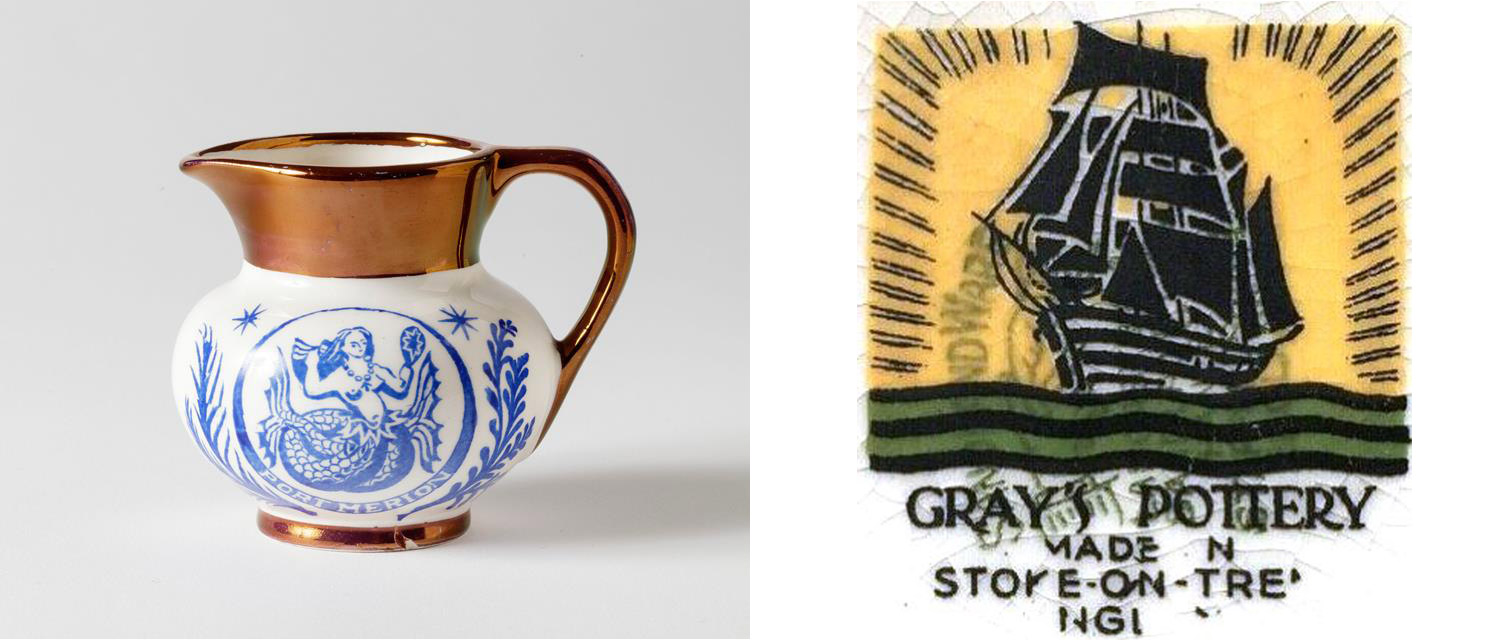
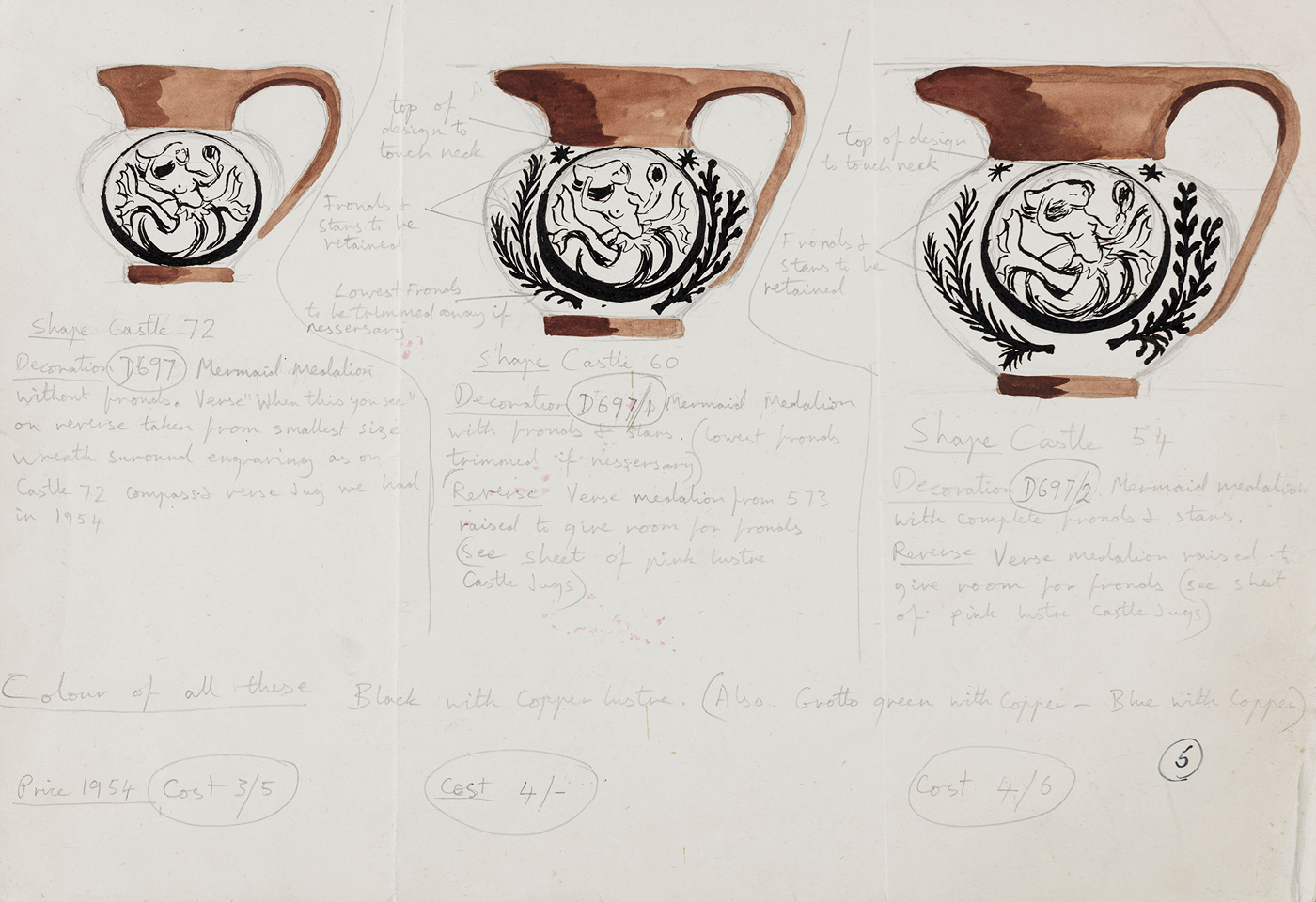
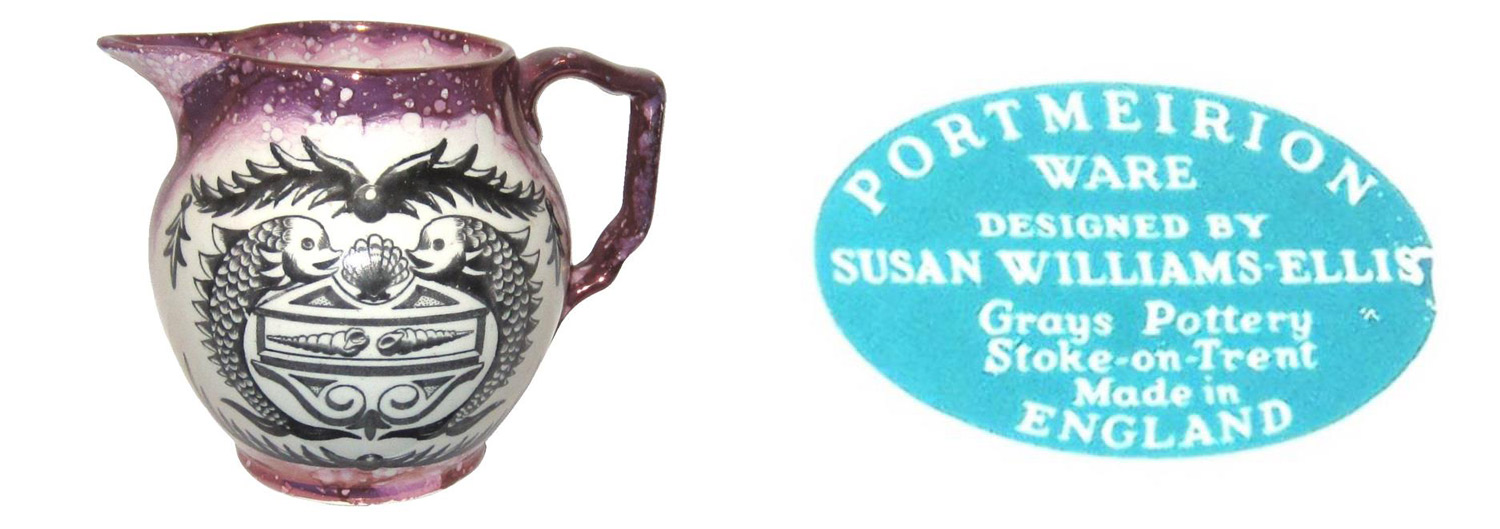
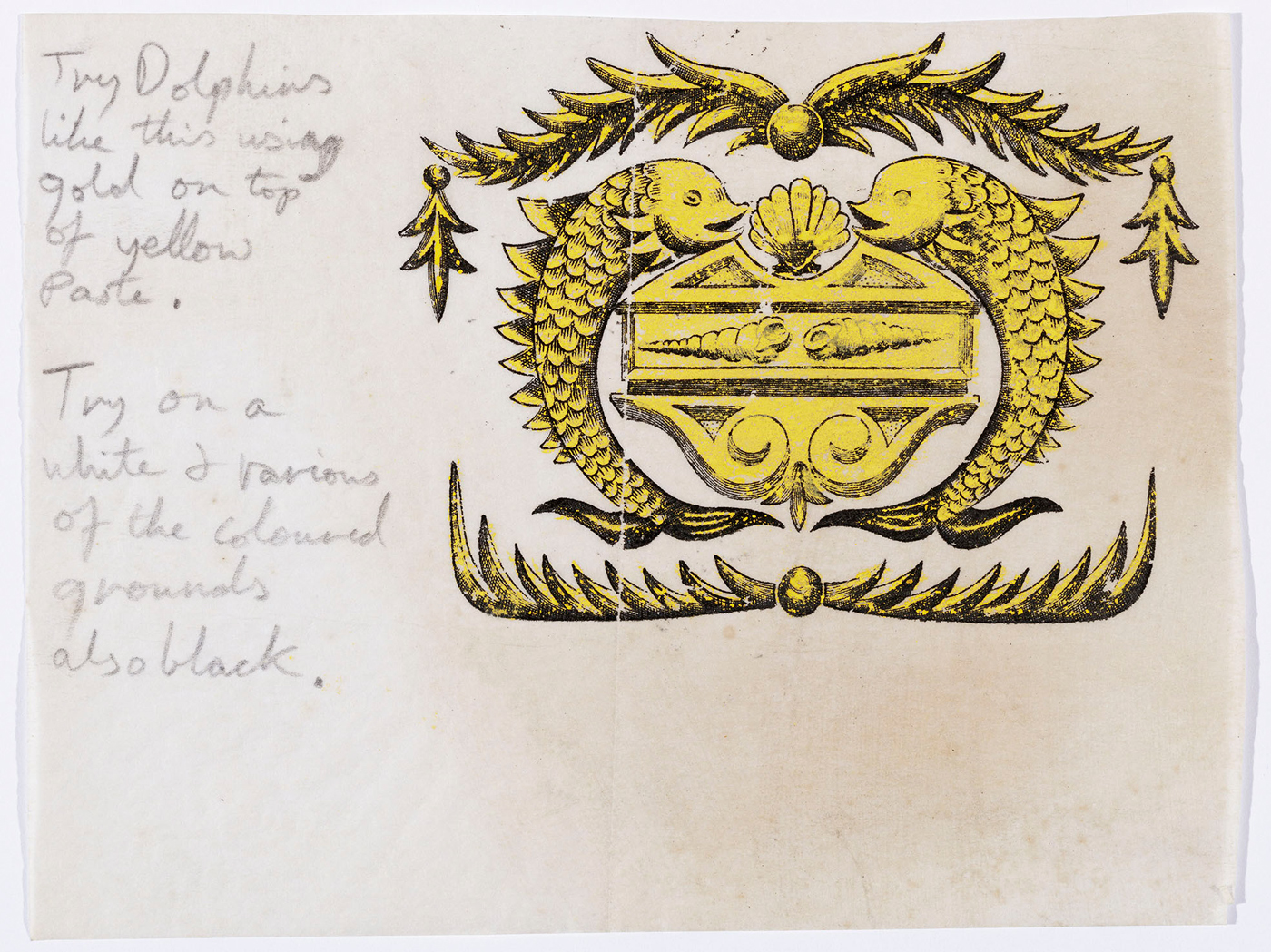
Totem coffee pot, ‘Cylinder’ shape, amber glaze, 1963.
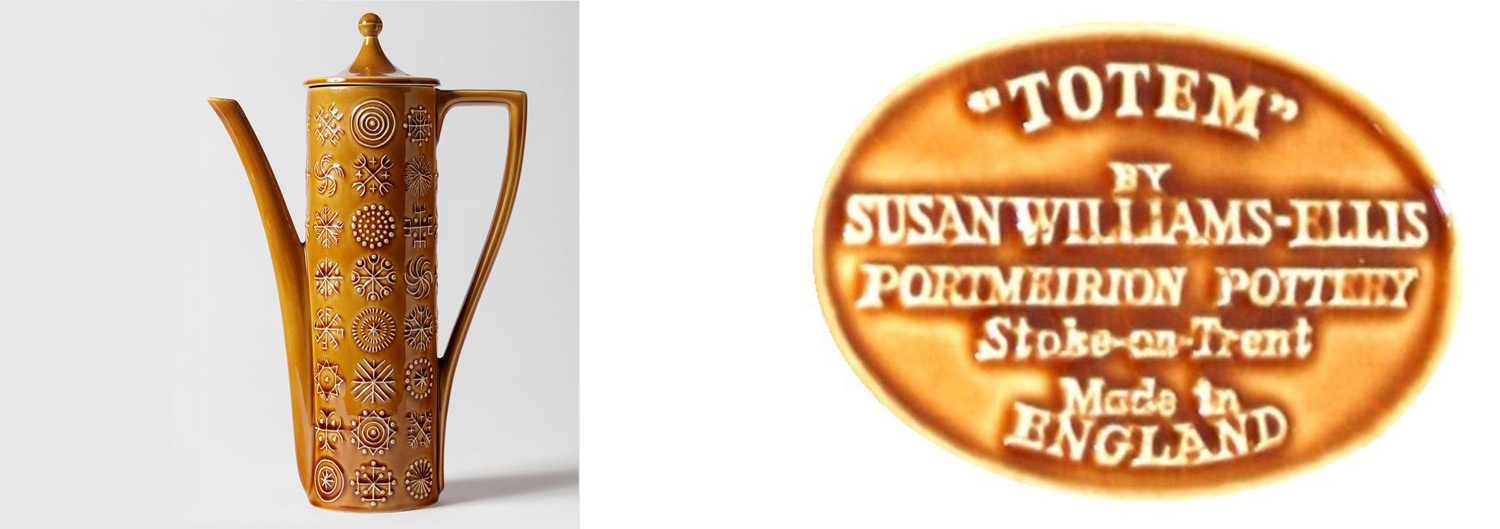
Botanic Garden plate, Cactus Grandiflorus, from 1972. The motifs are taken from 19th-C books; Rebecca Hey’s ‘The Moral of Flowers’ (see also the ‘Daisy’ plate) and Thomas Green’s ‘Universal Herbal’.
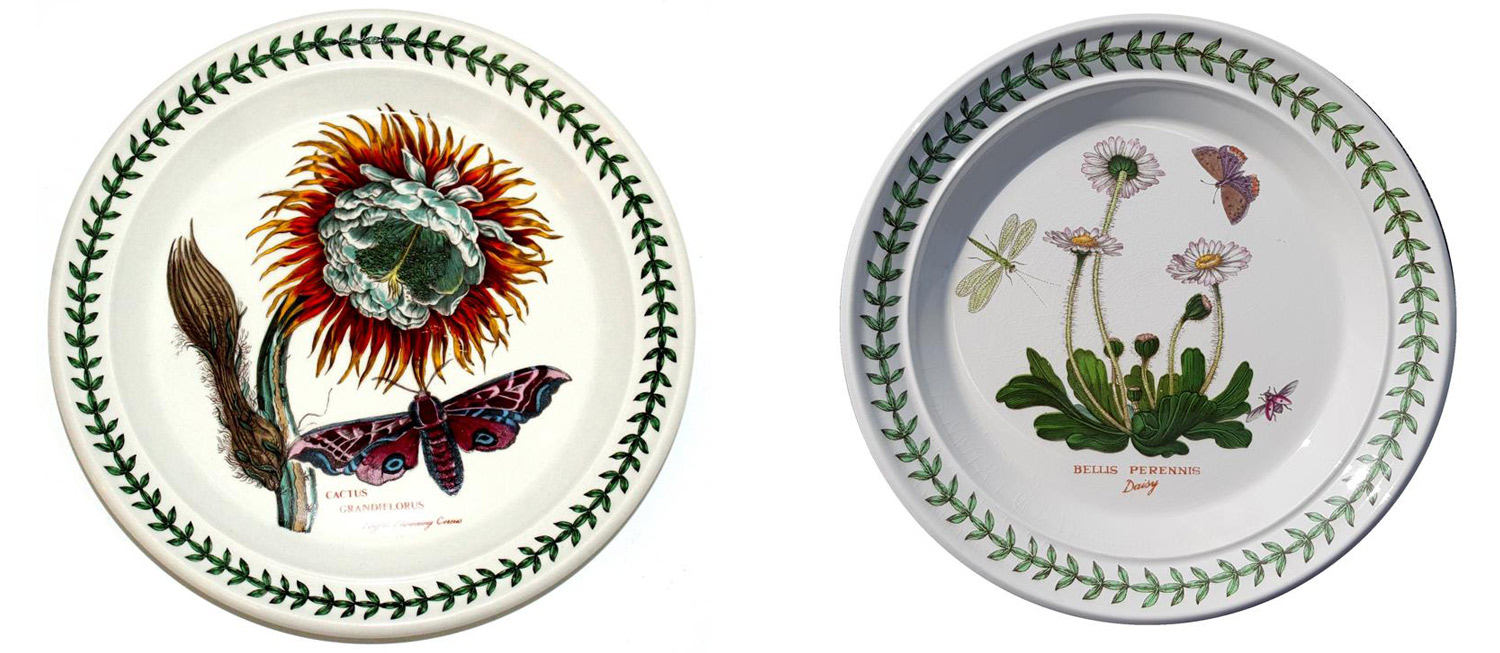
‘The Moral of Flowers’ by Rebecca Hey was the source for Botanic Garden’s Daisy

Oranges and Lemons side plate, c.1979. This design was launched in 1975, Euan Cooper-Willis, Susan's husband, wrote: 'Susan did the paintings from this vigorous pattern from life on a holiday in Ibiza ... she chose this design for domestic use for her house in Ibiza in 1991
The unusual dragon backstamp signifies that it was decorated at Penrhyndeudraeth, where a small Portmeirion factory was established, decorating seconds from Stoke-on-Trent.
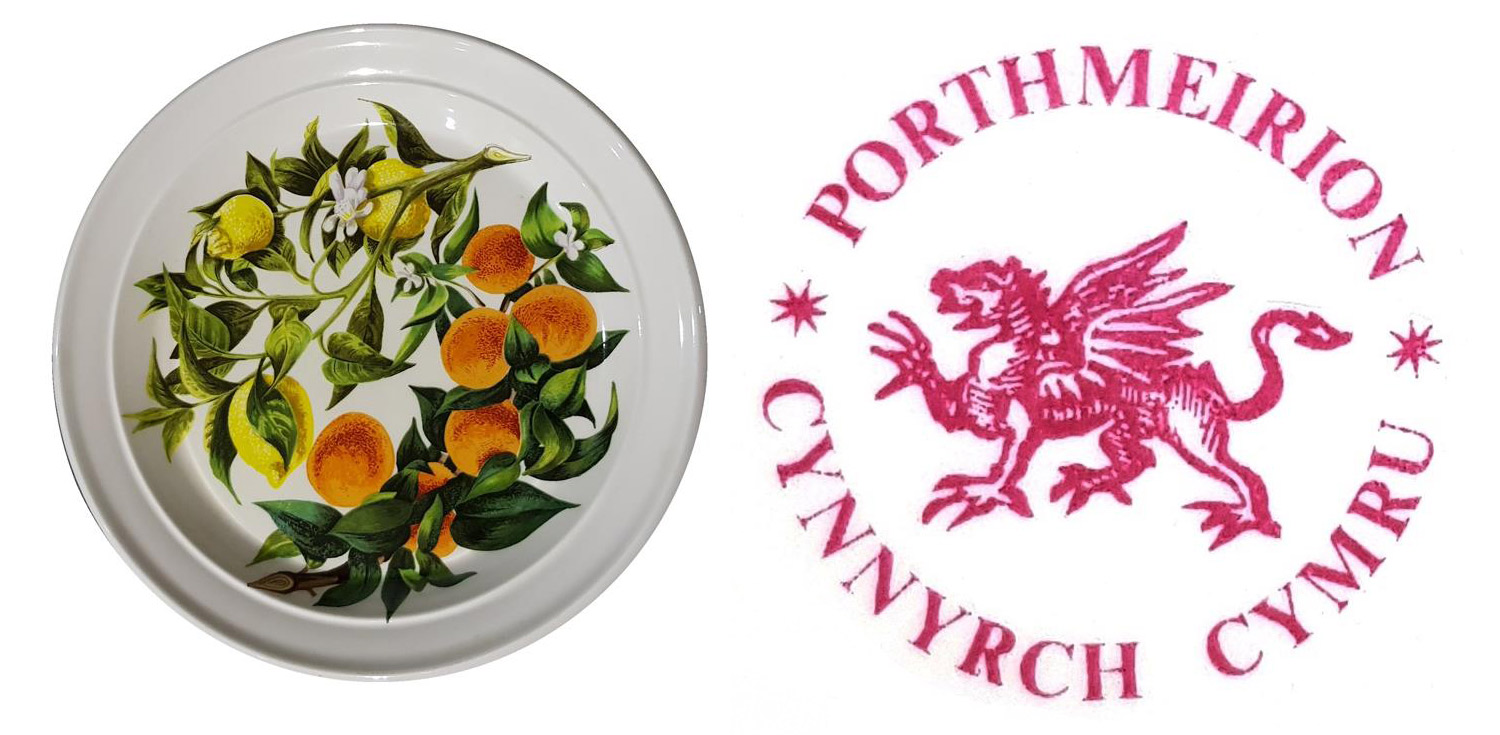
Cable jug, from the British Heritage Collection, 1980s. This was made from a mould Susan found in Kirkham’s attic. It came from Alcock’s Pottery, who first manufactured the jug to commemorate the laying of the trans-Atlantic telegraph cable in 1866.
www.rmg.co.uk/collections/objects/rmgc-object-383667
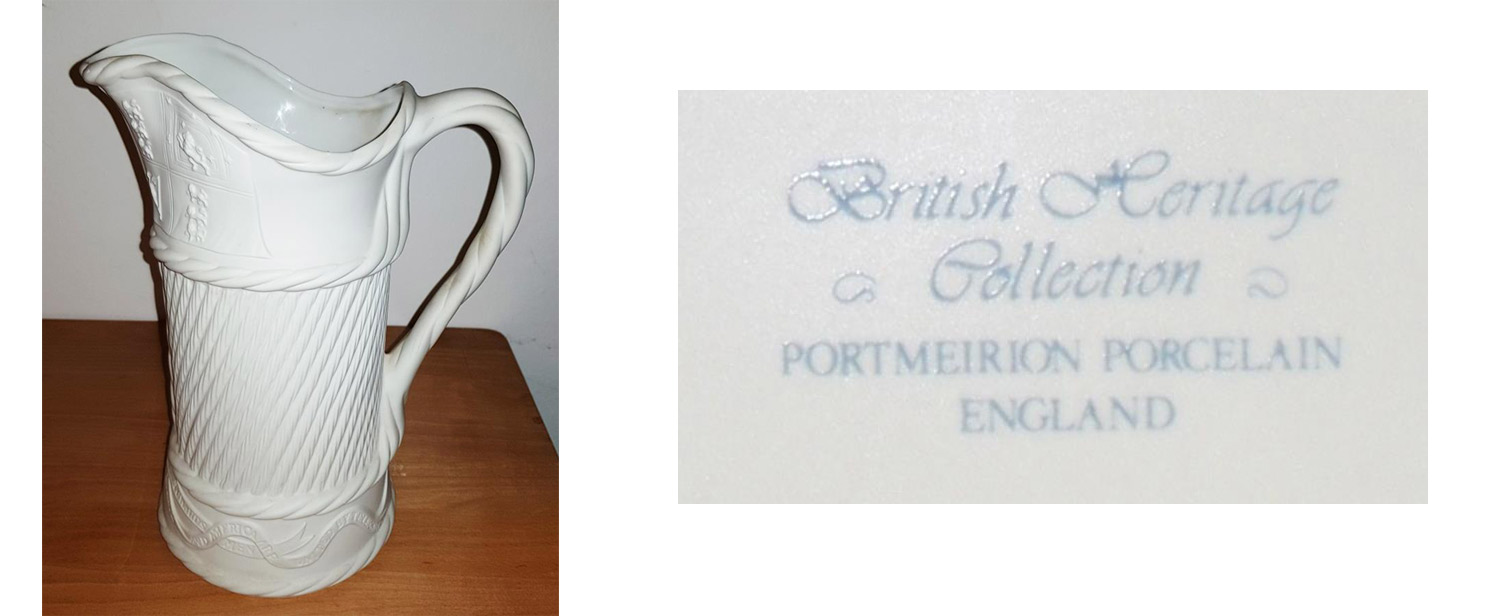
Summer Garland jug, ‘Moonstone’ shape in Portmeirion China, which was launched in 1994. Philip White devised the recipe, which differed from other types of china as it contained no bone; and Susan designed the shape. The decoration is a hybrid of earlier designs, and, ironically, includes the ‘Christmas Rose’ motif.

Caribbean Platter, late 1990s. One of six designs for limited edition plates, devised from Susan’s underwater drawings. This is a sample, on the back of which is written, in Susan’s writing ‘Dance of the Damselfish. A courtship dance I think. They seemed very much in love.’.
